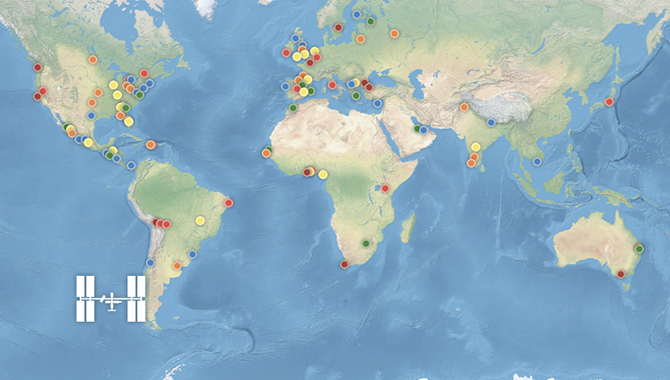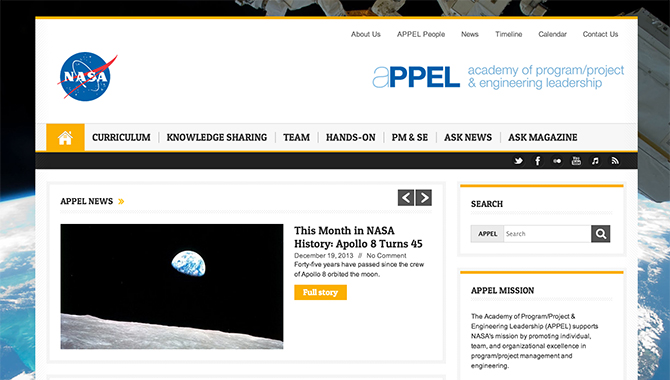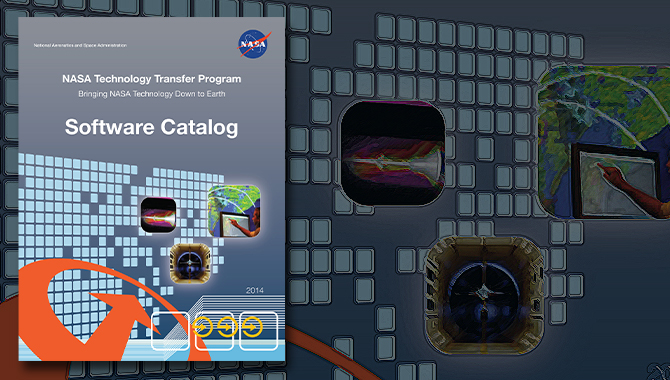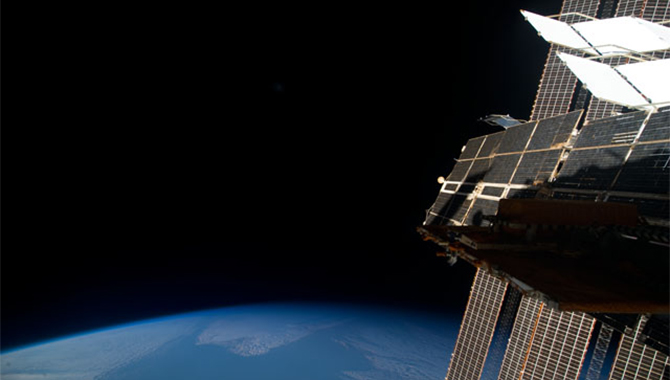
NASA’s global mass collaboration event is back—and it’s aiming to leverage space data in new and interesting ways.
For 48 hours beginning April 12, 2014, thousands of participants from all over the globe will engage in NASA’s third International Space Apps Challenge. As part of NASA’s Open Innovation Program, Space Apps is a mass collaboration event that brings together many minds to solve tough challenges in support of NASA’s missions and operations. During the event, NASA will coordinate across approximately 100 locations around the world to engage and connect participants as they seek to generate new and innovative solutions for space exploration.
NASA’s public data sets will serve as the foundation for many of the solutions that are created. (One such data set, climate.data.gov, received recent attention from the White House.) Furthermore, all of the solutions created during the International Space Apps Challenge are considered open source, meaning that they are available for use by anyone.
APPEL News spoke with NASA Open Innovation Program Manager Beth Beck about the upcoming event.
APPEL News: The challenges for this year cover five main themes: Earth Watch, Technology in Space, Human Spaceflight, Robotics, and Asteroids. How were these topics selected?
We did things a little differently this year and sought out sponsors for each the main challenge themes. We went to each of NASA’s mission directorates and organizations and asked, “What are categories that you want to focus on this year?” Science Mission Directorate Associate Administrator John Grunsfeld identified Earth observation as one area of focus, so we created the “Earth Watch” category. We went to the Human Exploration Operations Mission Directorate and they identified human spaceflight and robotics as themes that were of particular interest to them. The Space Technology Mission Directorate wanted to sponsor robotics and technology-related challenges. Finally, the Office of the Chief Technology is sponsoring our asteroids category, which is another big area of interest this year because of the agency’s focus on the grand challenges.
APPEL News: Can you tell us more about how the Space Apps mass collaboration model takes an alternative approach to generating new ideas and engaging the public in problem solving?
I think we’re in the infancy of understanding what citizen engagement really looks like. What Space Apps does differently from other challenge programs at NASA—and we’ve had our engineers tell us this—is that Space Apps encourages participants to come together in a physical location over a distinct period of time to solve challenges. Most innovation programs don’t facilitate a teaming environment where participants can come together and problem-solve while leveraging the collective genius of people around them. Space Apps is the only model that brings solvers together in both physical and virtual locations around the world.
Going forward, the next big challenge for us is to figure out how to keep this community of solvers engaged. How do we leverage this community in the future? They offer a valuable fresh perspective, which allows us an opportunity to look differently at our own challenges.
APPEL News: How does Space Apps open itself up to participants with a variety of skill sets and not just programmers?
So first, this year is different from previous years in that we have labeled our challenges beginner, intermediate, and advanced. You can sort through them on the website. For people who are newbies to this, they may want to start with a beginner challenge as they are looking to put together solutions.
Last year, one of the apps created was something called T-10. Astronauts on the International Space Station have all of these pictures that they need to take and sometimes the weather gets in the way of a good shot. T-10 notifies astronauts of when the weather is good over certain locations on Earth so they can take a picture of it.
One of the members of the T-10 team was a young woman, who is a designer, communicator, and generally media savvy person. She went out to the virtual Space Apps community and said, I have this idea and I need help with it. She knew she didn’t have the skills to actually do the coding for the app. She needed coders to do that. That’s how the T-10 team was created. So that’s one way to team up with people from different disciplines. Also, keep in mind that while coders can code, not all of them are great at storytelling. We need all of those skills during the event.
APPEL News: The event attracted over 9,000 global participants last year, which included members of the public, local organizations, and space agencies from around the world. What advice can you give to NASA practitioners in terms of getting involved in this year’s event?
With supervisor approval, NASA employees can serve as subject matter experts for one of the five main themes and talk about how data applies to a specific mission or their job as a NASA employee. We definitely need that. Also, if a NASA employee sees that a publicly available data set isn’t listed for the event, send us a message and we’ll look to update the website. Unfortunately, employees can’t form teams and solve specific challenges in an official NASA capacity. (Learn more from the FAQs.) However, we would love to have them participate and help people better understand NASA.
We’re learning so much about public engagement and new ways of thinking through problem solving with the public. We’re looking at our current Space Apps model and hope to take what we’ve learned to different communities like the gaming or 3D printing communities. We are thinking about having different kinds of ongoing challenges that happen more often than just once a year. This is just the beginning.
Learn more about the International Space Apps Challenge.
International Space Apps Challenge will take place on April 12 – 13, 2014.
Featured Image Credit: NASA









